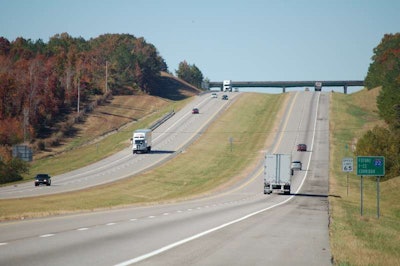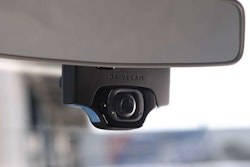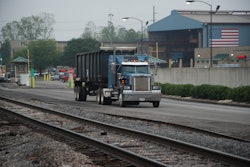You can convert a 6×4 axle configuration to a 6×2 configuration and increase fuel economy by 5 percent. It’s been proven many times, but I seldom recommend it to an owner-operator. Why? Because it has a longer return on investment.
I’ve identified dozens of such fuel-saving approaches based on maintenance, equipment modifications and implementation of other devices. But if you want the biggest bang for the buck, the quickest break-even, possibly the best thing you can do is to change your driving habits. Since it doesn’t cost you anything, the savings go immediately to the bottom line. Those savings can go as high as $15,000 per year.
SPEED. Slowing down 1 mile per hour will improve fuel economy by 1/10 of 1 mile per gallon. That may seem small, but it equates to about $1,000 each year in most operations. That’s pretty easy math: Slowing down 5 mph puts $5,000 to the bottom line, while 10 mph works out to a $10,000 raise.
If you’re doubtful of the results, slow down just 1 mph. If you normally set your cruise at 70, start setting it at 69 for two weeks, then at 68 for the next two weeks, and so on. You won’t notice the difference in one day, but you soon will notice a difference in your bottom line.

PROGRESSIVE SHIFTING. Work on progressive shifting to improve fuel economy and extend the life of your tires and driveline. Get the truck moving with the lowest-possible rpm in each gear. If you’re not actively practicing this technique, it’s easy to get into the habit of winding out each gear to a much higher rpm.
SMOOTH ACCELERATION/DECELERATION. Most of us tend to drive on autopilot, but that doesn’t save fuel. Imagine that you have a raw egg on the bottom of your shoe and you’re trying not to break it by putting easy pressure on the throttle and also the brake. This requires you to focus on your driving, as well as looking further down the road and planning.
 Hills present opportunities for saving fuel by proper acceleration, shifting and use of the boost gauge and the pyrometer.
Hills present opportunities for saving fuel by proper acceleration, shifting and use of the boost gauge and the pyrometer.MANAGING GRADES. One more technique that requires attentive driving is to heed two important gauges: the boost gauge and the pyrometer. On rolling hills or hard climbs, take the truck off cruise control and drive it using this technique. Anticipate the hill and increase speed just slightly with light easy pressure on the throttle. Downshift a little earlier and work to keep the boost and pyrometer low, finding the gear that allows you to climb the hill without the throttle to the floor. You know you’re in the right gear when you still can accelerate if necessary.
Back out of the throttle before the crest, allowing the truck to gain some momentum on the downhill side for a run at the next hill. This downhill momentum does not apply to long mountain grades; always come down those in a low gear, allowing the engine brake and the gear to maintain the low speed. If you have an autoshift transmission, you want to put it in manual when on the hills.












